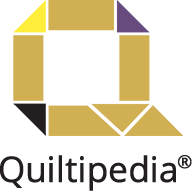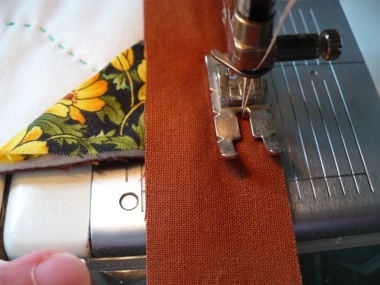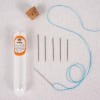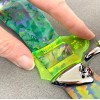Quilt Binding
A Quilt Binding is the finished outer edges of a quilt. Bindings are most often made from cotton Quilt Fabric, sewn to the raw edges of a quilt, then folded over to the back to enclose the raw edges. Another Quilt Binding method is to bring the excess backing fabric around to the front to cover the batting and the edges of the top of the quilt, then stitch in place on the front of the quilt by hand or machine. Decorative stitching can also be used to hold the binding in place. When piecing the binding, place the strips, Right Sides Together, at a 90 degree angle and stitch across the corner; when the seam is opened it should be a long straight strip of fabric, then trim the seam. Bindings can also be an opportunity to add more color to the quilt, use a complimentary color, a variety of different fabrics in the binding or add piping.
Benefits of a Quilt Binding
- The outer edges of a quilt often get the most wear from handling.
- The raw edges of the quilt top, batting and backing, need to be finished to protect the quilt.
- Fabric choice can be another design element of the quilt, adding additional colors and prints so think about your Quilt Binding early on.
- Double-Fold binding, often called "French-Fold" binding, is most popular today. When the fabric is folded over it is ready to be stitched in place. Some quilters prefer a Single-Fold binding, especially on very small or miniature quilts.
- Binding cut on the bias works very well for curved or scalloped edges of a quilt.
Supplies and Tools for Quilt Binding
There are several tools created to assist with the Quilt Binding process. Typically you will need the following:
- Quilt ready for binding- measure the 4 edges of the quilt to determine how much binding is needed and add 20 inches to accomodate the corners and finishing the binding.
- Fabric- determine the width for the finished binding to be on the front and cut the binding fabric wide enough to achieve that size. For a French Fold binding a general rule is to take the finished width on the front, multiply 8 and add 1/8" to 1/4" to allow for the folds in the fabric. Some quilters use more than one fabric in a binding or add piping to the inside edge. Fabric should be ironed and ready to stitch.
- Ruler, Rotary Cutter and Cutting Mat- most bindings are cut on the cross grain. For quilts with curves on the edges, Grandmother's Fan, Dresden Plate or Double Wedding Ring, cutting on the bias will help the binding curve to fit the edge better.
- Basic Sewing Supplies- to apply the binding by machine and then either hand-sew or machine-sew the turned binding to the quilt.
- Binding clips help to keep the turned edge in place while the binding is being sewn.
- Mitered Corner Tool - the best way to handle the corners with a 45 degree angle.
What I Wished I Knew When I Started a Quilt Binding
Cross-grain cut binding fabric works well for most quilt projects and is easier to prepare and apply than bias-cut fabric. Sew 6" to 8" inches of binding in place, with the needle down, check and make sure the folded edge covers the sewing line.
Spending time getting the corners of your QUILT BINDING . Evenly stitched and neatly turned corners, makes a good finished edge and takes some practice. When turning the corner, check the direction of the fold on the back of the quilt and fold the binding on the front in the opposite direction. The opposite folds will keep the binding as flat and thin as possible.
Experimenting with various sizes of cut binding strips will help the quilter know what size is right for the look they want on any given quilt. Thicker fabrics and batting will require wider cut fabric strips.












